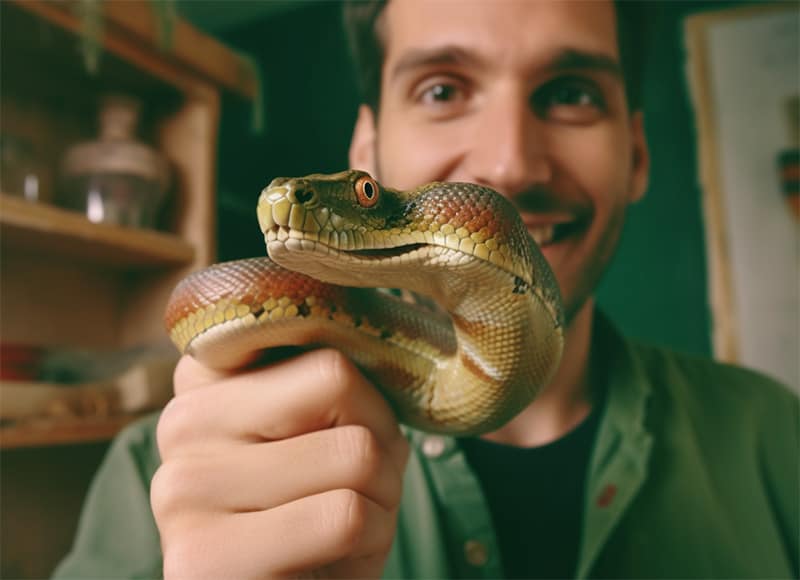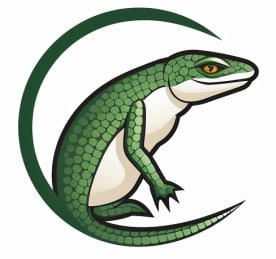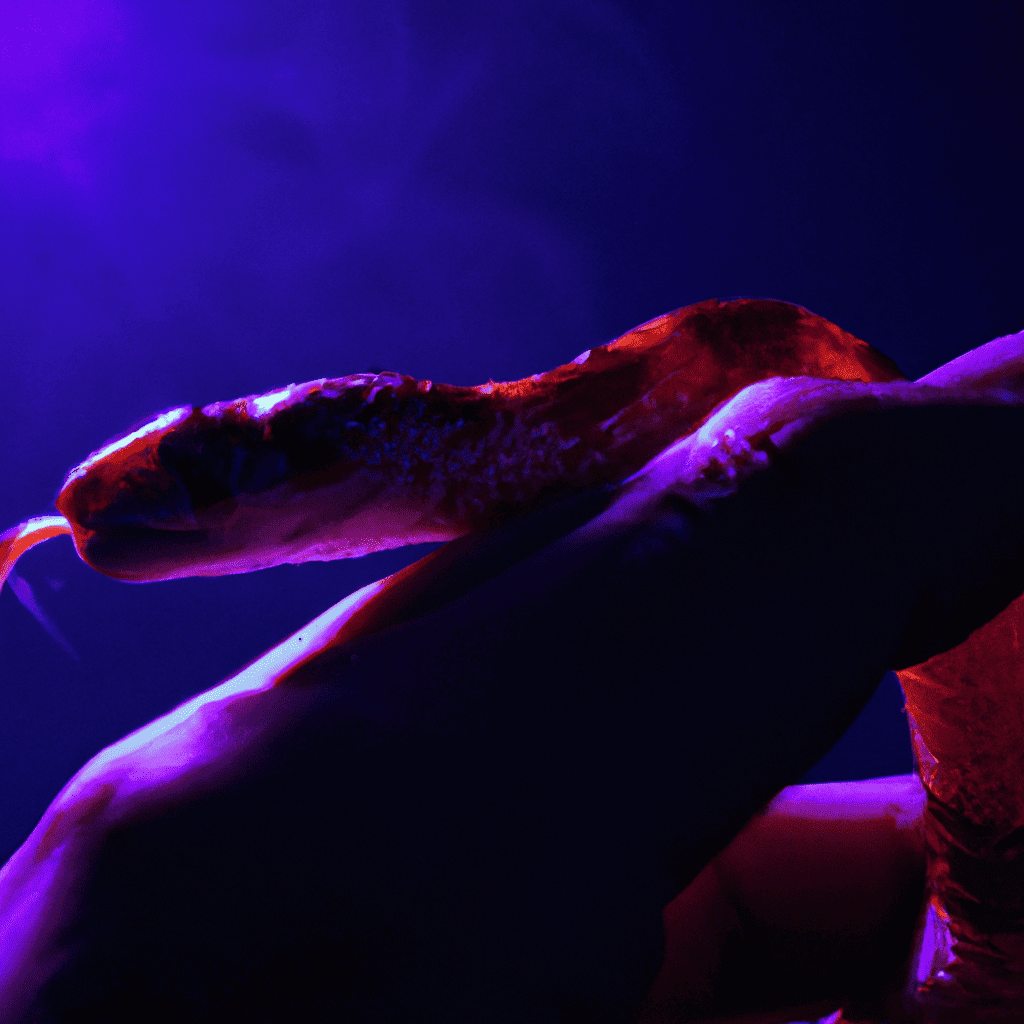Understanding Corn Snakes
Corn snakes are a beloved pet snake, gaining fame for their meek nature and beautiful looks. These non-venomous reptiles can reach up to 5 feet in length and are mainly found in the southeastern U.S.A. They come in various colors and patterns such as red, orange, yellow, and brown.
Their teeth are not that strong, so their bite won’t usually cause much distress. Mostly, it will just result in minor discomfort or tiny puncture wounds. If you do get bit by one, remember to clean the area with soap and water and keep an eye out for any infection.
Furthermore, corn snakes have a reputation of being clever escapists. They can squeeze through thin spaces and find ways to flee from their terrariums. That’s why it’s vital to make sure your corn snake’s enclosure is secure and escape-proof.
Pro Tip: Handle your corn snake with caution and care to avoid any fear or anxiety. Don’t underrate these harmless-looking creatures; their bite is still painful!
Corn Snake Bites: What You Need to Know
To understand corn snake bites properly, you need to know the symptoms, how they happen, and the factors that increase the risk of being bitten. This knowledge can help you take appropriate steps after a bite. So, let’s explore the sub-sections one by one and gain a better understanding of what you need to know about corn snake bites.
Symptoms of Corn Snake Bites
Corn snake bites can cause pain, swelling, redness, nausea, vomiting, and dizziness. If not treated quickly, more serious complications like infection or blood poisoning may occur. It’s important to get medical help right away.
Emotional distress and anxiety can also appear if you have a fear of snakes or have had a traumatic experience with them. Seeking help from a therapist may be needed.
It’s worth noting that corn snake bites are usually not aggressive and only happen when provoked. So, handle these snakes carefully and respect their space.
The ASPCA states that corn snakes are non-venomous and pose little threat to humans. Though, caution should still be taken as they can carry bacteria or other harmful microorganisms that can cause infection.
How Corn Snake Bites Happen
Corn snake bites happen when these non-venomous reptiles feel threatened or mishandled. They could also occur by accident while being handled. The bites are usually a defence mechanism. They can be painful and scary for both the snake and the person. The teeth are small and not usually dangerous. But, if left untreated or ignored, infections can occur.
Clean the wound with soap and water and seek medical care if needed. Handle the corn snake carefully and confidently. Avoid sudden movements and squeezing the tail. This may agitate them and lead to biting.
Corn snakes don’t present any severe medical threats. But, ignoring or failing to treat the bite could result in possible infections and other complications. Seek professional medical advice if this happens.
With proper handling and knowledge of their behaviour, you can enjoy your time with your pet without fear or hesitation. Don’t let your guard down – these factors could raise the chances of a bite!
Factors that Increase the Risk of Corn Snake Bites
Corn snake bites can be avoided with proper precautions. They don’t usually require medical attention. Still, if you experience pain or swelling, seek help right away.
To prevent a bite, consider these risk factors:
- Move slowly; jerky motions can trigger a strike.
- Don’t hold too tightly.
- Keep your face away; snakes may view breath & eyes as threats.
- Don’t smell like prey.
- Don’t handle when in shed; vision is impaired.
- Clean hands of animals & chemicals.
Owning a corn snake? Learn proper care & safe handling. Prevent pain & discomfort – take action now! Remember: a corn snake bite won’t turn you into a cob!
Do Corn Snake Bites Hurt?
To learn more about corn snake bites, you need to understand the pain levels and sensations involved. In order to deal with any potential bite, you should know the benefits of taking a calm approach. This section, ‘Do Corn Snake Bites Hurt?’, discusses whether corn snake bites are painful and what you can do to manage the pain.
Pain Levels and Sensations of Corn Snake Bites
Corn snake bites can cause a range of sensations and levels of pain. Factors like the size and age of the snake, the amount of venom, and the location of the bite can all influence the bite’s severity.
Typically, the initial bite feels like a bee sting. But the pain can range from mild to severe. Usually, discomfort dissipates within 30 minutes to two hours without medical attention. However, it’s important to keep an eye on your symptoms and get help if necessary.
If you’re bitten by a corn snake, the best course of action is to flush the venom from the wound and take pain medication. For more specific advice, consult a doctor or veterinarian.
Bottom line: if you’re dealing with a corn snake bite, remember to ice the pain, use antiseptic on the wound, and replace your pants.
How to Treat Corn Snake Bites
To treat corn snake bites with first aid for corn snake bites and seeking professional medical help is the solution in this section. It’s important to know how to immediately treat a snake bite as it can be a serious medical emergency. In this section, we’ll introduce two sub-sections that cover the different aspects of treating corn snake bites.
First Aid for Corn Snake Bites
Corn snake bites require quick medical attention. Wash the wound with soap and water, but don’t put anything that constricts or uses ice on it. Keep the area lower than your heart and check for signs of an allergic reaction such as shortness of breath or swelling.
It’s important to remember that a corn snake bite is usually harmless. Cleaning the wound prevents microbe contamination and infections that could cause long-term health issues. If you have intense pain or an allergic reaction, seek professional medical care right away.
If you have been bit by a corn snake, it’s a good idea to drink lots of fluids to help reduce the risk of circulatory shock. A lady named Jayne Adams was bitten by a corn snake that was coiled around her bath siphon tube. She was bitten around 10 times, but luckily didn’t experience any symptoms since corn snakes usually have mild venom if present.
When it comes to treating a corn snake bite, it’s best to leave it to the professionals. Don’t rely on a snakebite kit and YouTube tutorials.
Seeking Professional Medical Help
In case of a Corn Snake bite, you must get medical help straight away. Experts know the best way to treat snakebites.
If the person bitten is having problems breathing, lots of swelling, or difficulty swallowing, they need help urgently! It’s important to find out what type of snake bit them too.
You can do some first aid before going to the hospital. Keep the area still and clean the wound with gentle soap and water. Don’t use suction devices or tourniquets as they can make the bite worse.
Prevention Tips for Corn Snake Bites
To prevent corn snake bites when handling these creatures, follow these tips in our article: ‘Corn Snake Bites: Do They Hurt & What Should You Do?’ First, learn how to handle corn snakes safely to avoid unnecessary bites. Then, ensure they are kept in proper enclosures to limit contact.
Handling Corn Snakes Safely
Handling Corn Snakes Without Harm:
Gloves are essential for safe handling. Sudden movements and noises should be avoided as they can startle the snake. Hold close to its body and never grab by the tail. If bitten, remain calm and seek medical attention.
Food and water must be provided regularly for corn snakes. They originate from the southeastern US, but can be found worldwide due to the pet trade. Colors and patterns vary from orange, brown, black, or red stripes.
Keep them in an appropriate enclosure, else they might escape and seek revenge!
Keeping Corn Snakes in Proper Enclosures
Caring for corn snakes is essential. Providing them with the right living quarters is a must. Setting up the habitat with suitable lighting, temperature control, and hiding spots is key. Cleaning the enclosure regularly and keeping it free from hazards is also important. This helps prevent the snake from feeling threatened or uncomfortable, which can lead to bites. Every snake needs unique care, so research and expert advice can help. In case of a bite, just tell everyone it was a love nip from your pet corn snake!
Conclusion
Corn snake bites can be uncomfortable and painful, but not usually dangerous to humans. If bitten, wash the area with soap and water. Put on antiseptic or antibiotic ointment. Look out for signs of infection, like redness, swelling or pus. See a doctor if needed.
Handle snakes with respect and caution. Avoid handling them if you don’t have experience or training.
Snakes play a vital role in ecosystems. They control rodent populations and are a food source for other animals.
The National Wildlife Federation notes that there are over 3,500 species of snakes worldwide. Only 15 percent are venomous. It’s important to understand their importance and learn how to coexist with them safely.
Frequently Asked Questions
1. Do corn snake bites hurt?
Yes, corn snake bites can hurt. However, they are not usually dangerous and rarely require medical attention.
2. How do I know if a corn snake has bitten me?
You will likely feel a sharp pain and may see two small puncture wounds on your skin. The area around the bite may also become red and swollen.
3. What should I do if a corn snake bites me?
First, try to stay calm and avoid panicking. Next, clean the bite wound with soap and water and apply a bandage if necessary. If the pain or swelling persists, seek medical attention.
4. Can corn snake bites be dangerous?
Corn snake bites are typically not dangerous, but there is a risk of infection if the wound is not properly cleaned and treated.
5. How can I prevent corn snake bites?
When handling corn snakes, it is important to be gentle and avoid startling them. Always wash your hands before and after handling snakes, as well as any equipment or accessories they may have come into contact with.
6. Should I be concerned if I have a pet corn snake?
While pet corn snakes may be less likely to bite than wild ones, it is still important to handle them with care and respect. Regularly cleaning and sanitizing their enclosure can also help reduce the risk of infection.

Alex Hartford, the founder of Reptile Truths is dedicated to uncovering the fascinating truths about reptiles, promoting their conservation, and sharing his knowledge with others.

